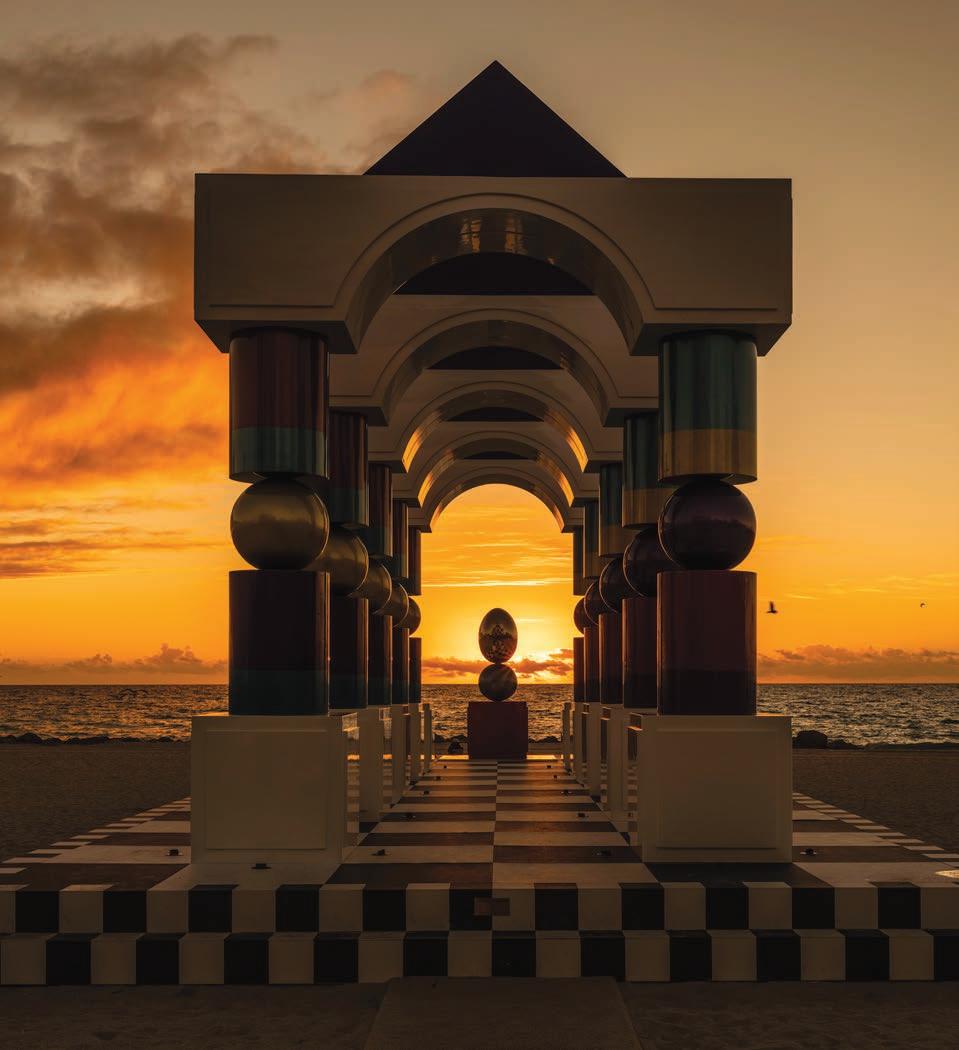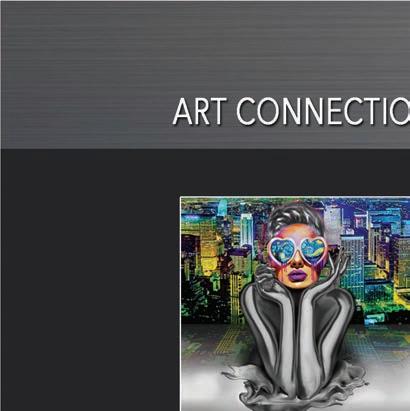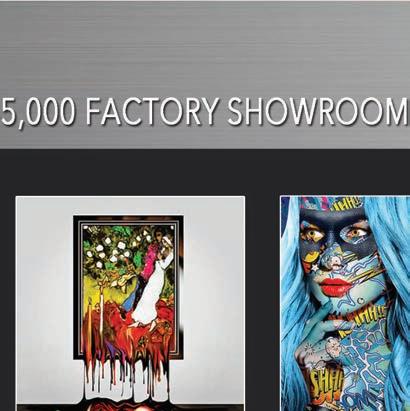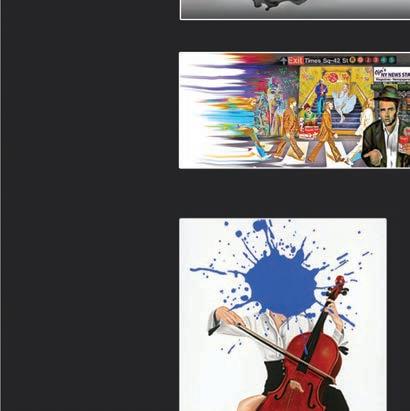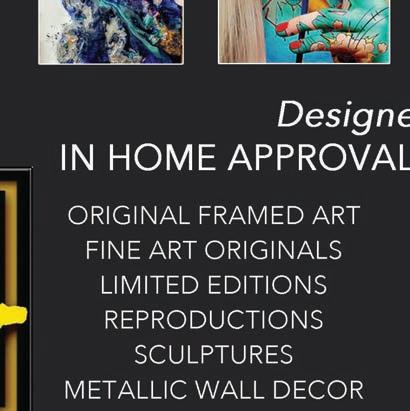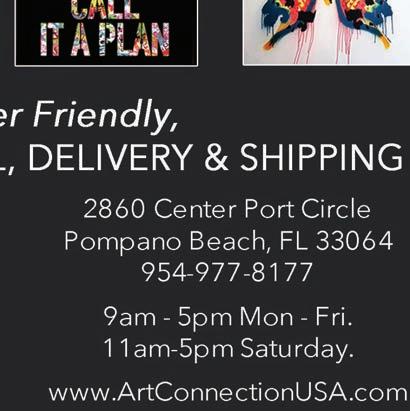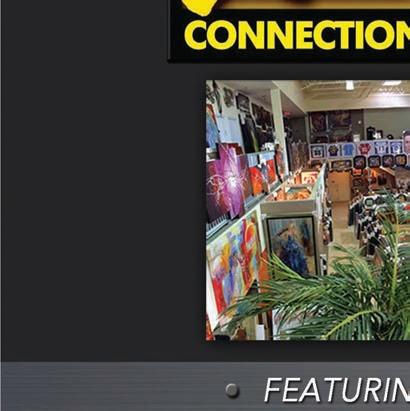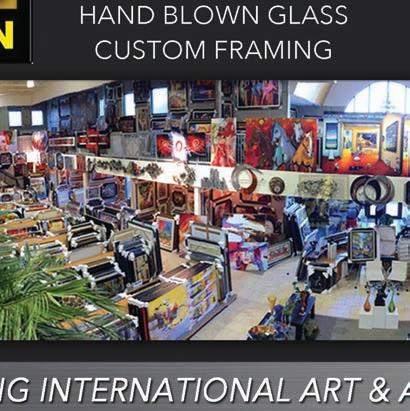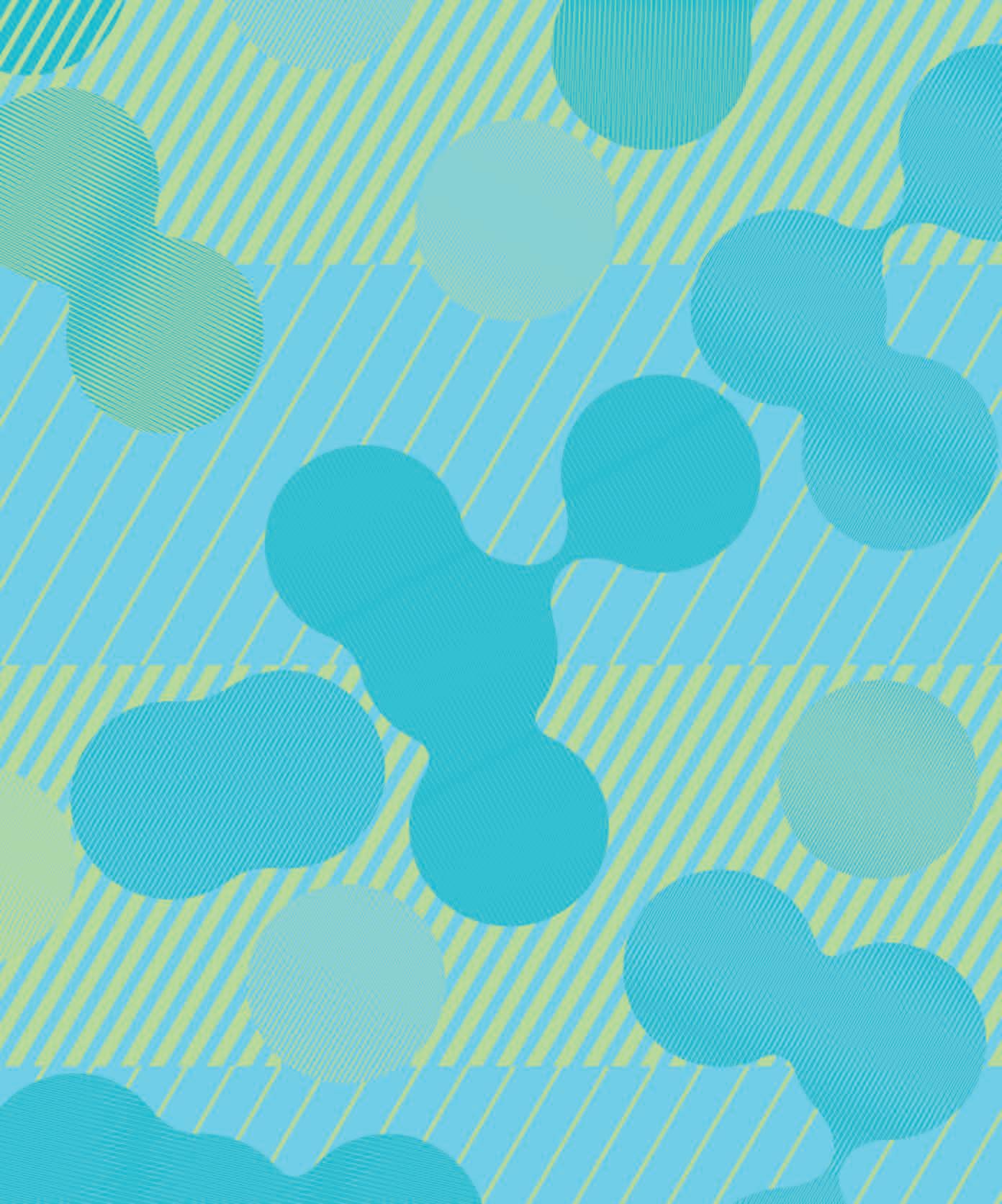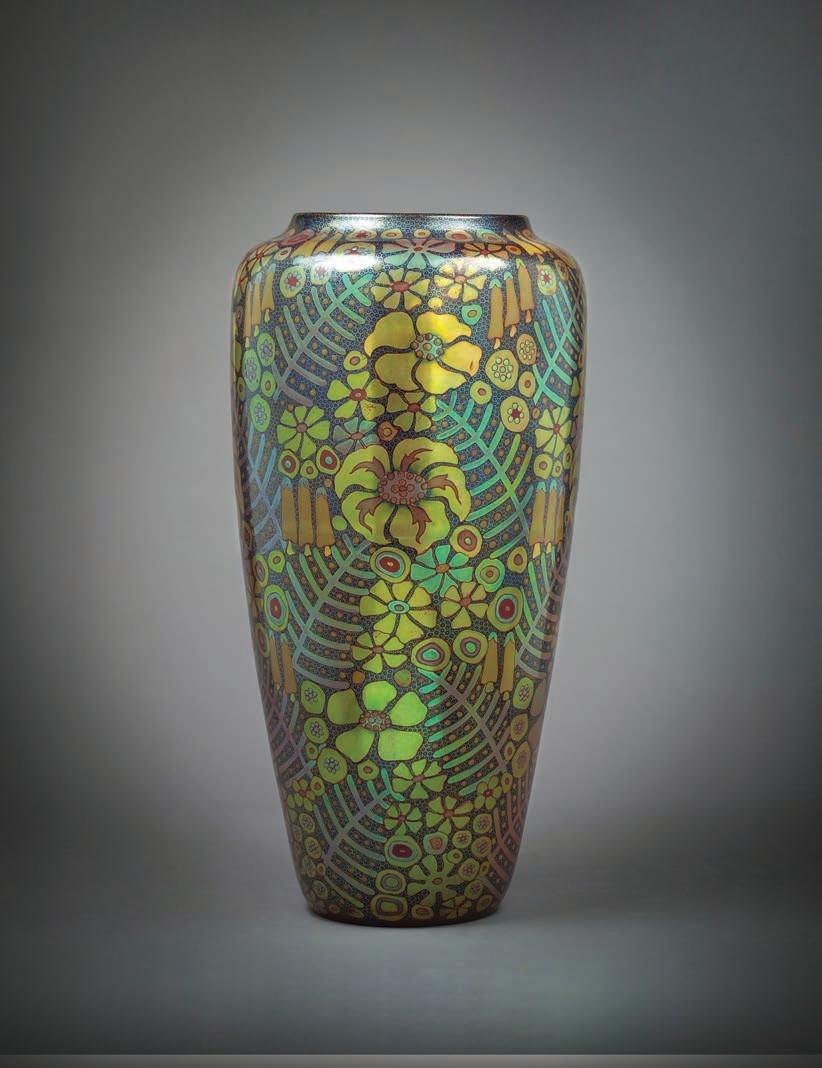A Connoisseur’s Guide to the South Florida Art Scene










An enterprising circle of artists has been pushing lacquerware in entirely new and dynamic directions by creating large-scale sculptures, works that are both conceptually innovative and superbly exploitative of lacquer’s natural qualities. These artists have mastered lacquer’s demanding techniques while altering its age-old perception by expanding boundaries and defying expectations.
Organized by the Minneapolis Institute of Art, the 33 works by 16 artists in Hard Bodies constitute the first-ever comprehensive exhibition of contemporary Japanese lacquer sculpture. All the works are from MIA’s Clark Collection, the only collection in the world to feature this extraordinary new form.


Aoki Chie, BODY 09-1 “Impact”, 2009, lacquer and hemp cloth on polystyrene foam. Minneapolis Institute of Art, Gift of the Clark Center for Japanese Arts & Culture, 2013.29.1339. Photo: Minneapolis Institute of Art
Hours: 10 a.m.-5 p.m. Monday, Wednesday-Saturday; 1-5 p.m. Sunday. Closed Tuesdays. Tickets: $10. Visit fourarts.org to reserve tickets and view all our season programs. fourarts.org | 102 FOUR ARTS PLAZA | PALM BEACH, FL
Hard Bodies: Contemporary Japanese Lacquer Sculpture is organized by the Minneapolis Institute of Art and toured by International Arts & Artists, Washington, DC.
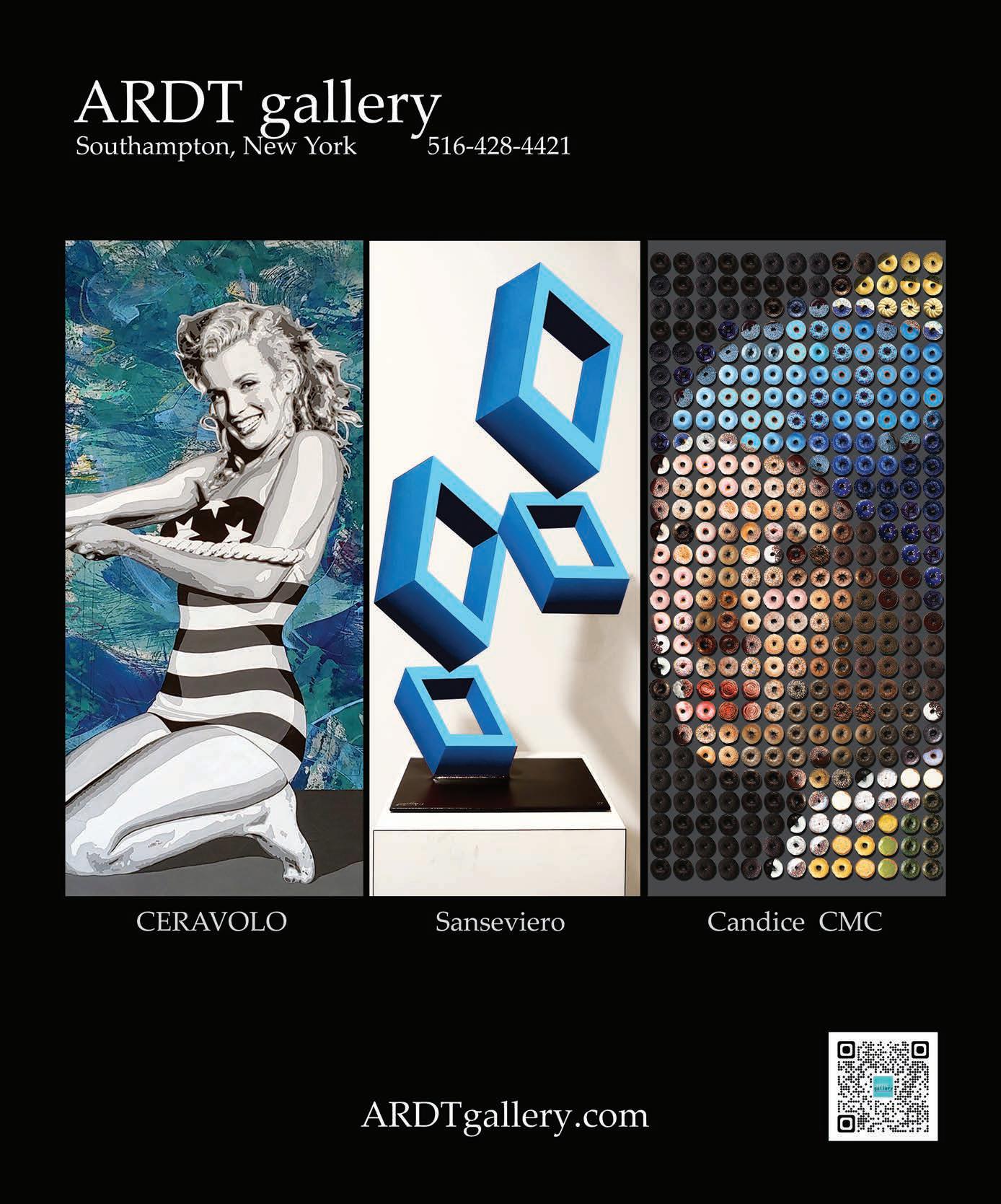
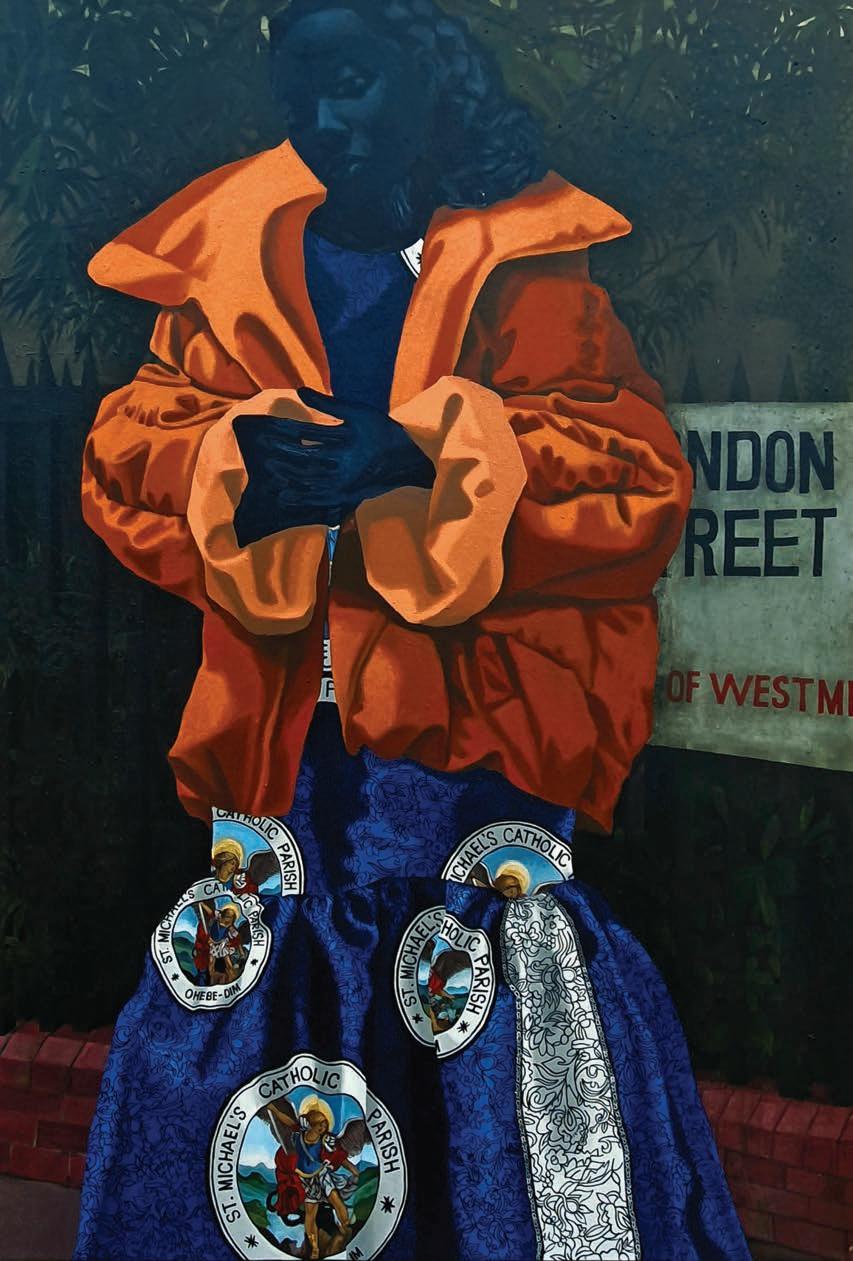
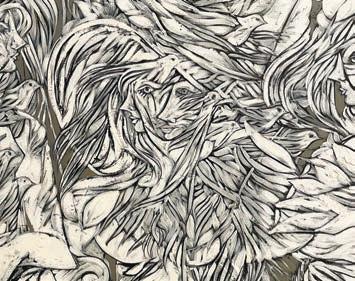


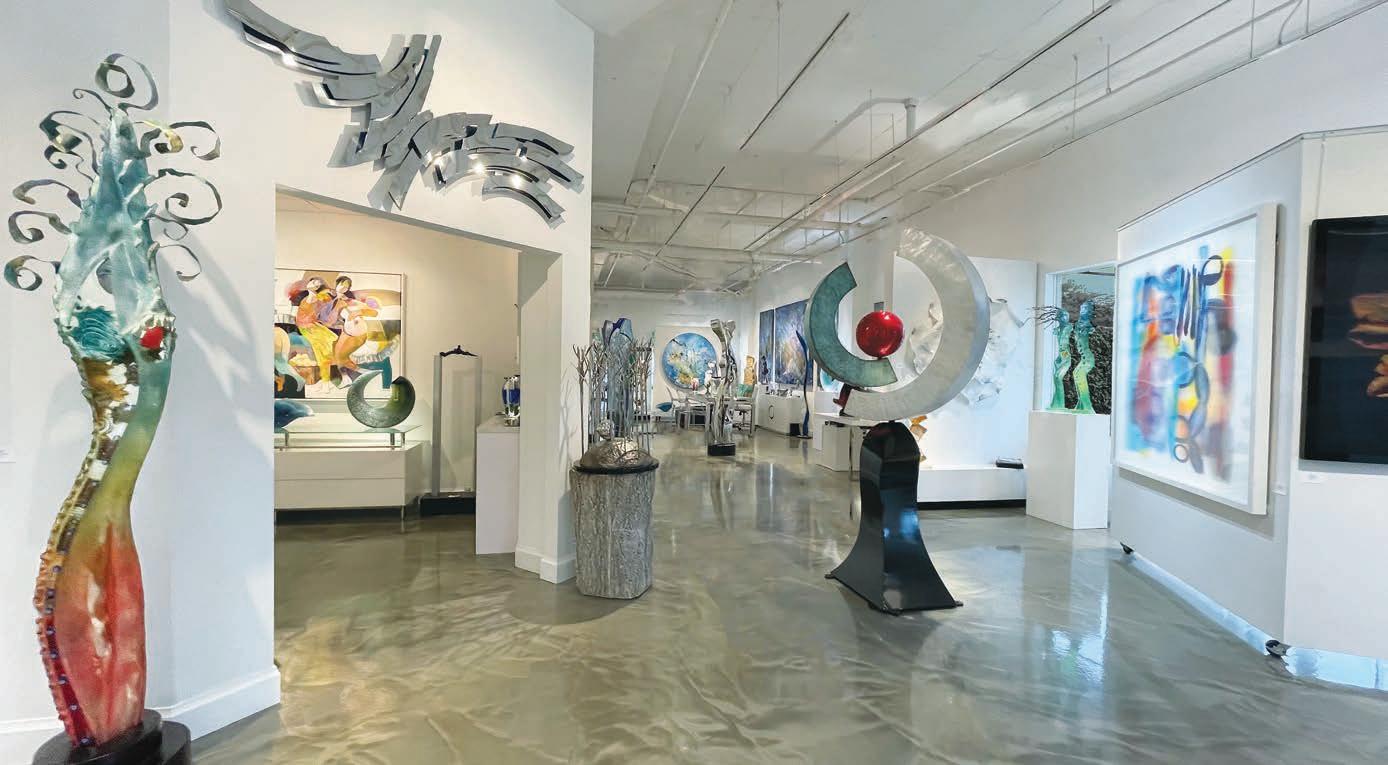
Publisher Terry Duffy
Sales Director Deidre Wade
Associate Publisher Dina Turner
EDITORIAL
Editorial Director Daphne Nikolopoulos Editor Mary Murray Creative Director Olga M. Gustine Art Director Jenny Fernandez-Prieto Digital Imaging Specialist George Davis
Contributing Writers
Judy Alexandra DiEdwardo, Christie Galeano-DeMott, Christiana Lilly, Lola Thélin
ADVERTISING
Publisher, Naples Meegan Wyatt Account Managers Kathleen Beuttel, Lourdes Linares, Melissa Zolin Schwartz Advertising Services Coordinator Elizabeth Hackney
PRODUCTION
Production Director Selene M. Ceballo Production Manager Kayla Earle Digital Pre-Press Specialist George Davis Advertising Design Coordinators Anaely J. Perez Vargas, Jeffrey Rey Production Coordinator Ileana Caban
OPERATIONS
Chief Operating Officer Todd Schmidt IT Manager Keith Hernandez Marketing Manager Rebecca Desir Distribution Manager Judy Heflin Circulation Manager Marjorie Leiva Logistics Manager Omar Morales Accounting Specialist Mary Beth Cook Accounts Receivable Specialist Ana Coronel Circulation Assistant Britney Stinson
In Memoriam Ronald J. Woods (1935-2013)
HOUR MEDIA, LLC CEO Stefan Wanczyk President John Balardo
PUBLISHERS OF:
Palm Beach Illustrated
Naples Illustrated • Fort Lauderdale Illustrated • Palm Beach Charity Register
Naples Charity Register • Florida Design • Florida Design Naples • Florida Design Miami • Florida Design Sourcebook Palm Beach Relocation Guide
Southwest Florida Relocation Guide • Fifth Avenue South • The Jewel of Palm Beach: The Mar-a-Lago Club • Traditions: The Breakers • Palm Beach 100 • Naples 100 • Art & Culture: Cultural Council for Palm Beach County • Pinnacle: Jupiter Medical Center Foundation • Waypoints: Naples Yacht Club • Naples on the Gulf: Greater Naples Chamber • Jupiter • Stuart • Aventura • Vero Beach Magazine • Community Report: Collier Community Foundation • Advances: Tampa General Hospital • Naples Realtor: Naples Area Board of REALTORS Official XII FIP World Polo Championship Magazine
Published by Palm Beach Media Group North P.O. Box 3344, Palm Beach, FL 33480 Telephone: 561.659.0210 • Fax: 561.659.1736 www.palmbeachmedia.com
Copyright 2022 Palm Beach Media Group North Inc. All rights reserved.
150 Yamato Road, Boca Raton, FL 33431 561.994.9180 Hours: Tues.–Sat. 10 a.m.–5 p.m. info@rosenbaumcontemporary.com www.rosenbaumcontemporary.com

There’s something thrilling about acting like a tourist in your own town. Personally, I love learning something new about a place I’ve been to a million times. The Magic City is full of hidden wonders, whether that’s relaxing in the Vizcaya courtyard on a lazy afternoon as a thunderstorm rolls in, finding a new-to-you café in a corner o Española Way, or noticing a surprising detail on a Wynwood mural you thought you knew inside and out.
Perhaps more than any other time of the year, Miami Art Week is the perfect opportunity to don that fanny pack—Chanel and Dior have some chic options—and explore. Allow this issue of Collect to help guide your way, from our introduction to the week’s top fairs and exhibitions (page 16) to our rundown of the Miami Design District’s most photogenic nooks (page 12).
One of the best parts about attending Art Basel Miami Beach or any of the fairs is finding your next favorite artist. That moment happened to me while I was perusing images from the upcoming Untitled Art fair and saw our cover artwork by Chris Akordalitis. Born and based in Paphos, Cyprus, Akordalitis crafts vibrant, playful scenes steeped in nature and tinged with humor. View more of his work at chrisakordalitis.com and via Dio Horia Gallery at diohoria.com
If you’re not sure where to start or what to look for, read our Q&As with South Florida gallerists and curators (page 26), who share the topics, creatives, and mediums that are causing waves in the global art scene. Once you’ve taken the leap and made a purchase, consult our “Home Galleries” feature (page 20) for inspiration for how to showcase it.
Regardless of whether you acquire a new piece or just browse, Miami Art Week is a wonderful excuse to take a break from your daily grind and immerse yourself in culture. Check out the new installations dotting the city’s coolest hotels as part of the No Vacancy art competition. Savor a meal at one of Miami’s freshly minted Michelin-starred restaurants. Take five minutes between exhibition hopping and soak in the scene along South Beach. Wherever Art Week takes you, it’s bound to be extraordinary.
See you at the fairs!
Mary Murray Editor
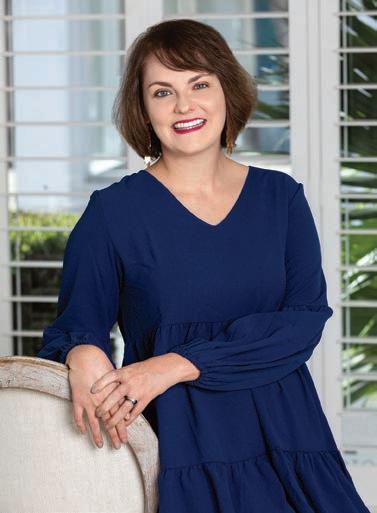
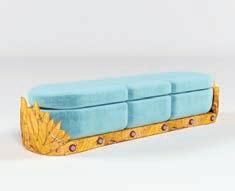
I COULD NAP HERE AS MY HUSBAND CAN ATTEST TO, I AM ALWAYS LOOKING FOR A COZY PLACE TO NAP. ADD A SUNBEAM AND I’M BASICALLY A CAT. KHALED EL MAYS’ DAYBED (ABOVE) AND JOAQUIM TENREIRO’S CHAISE LOUNGE, BOTH ON VIEW AT DESIGN MIAMI/, ARE ALREADY CALLING MY NAME.

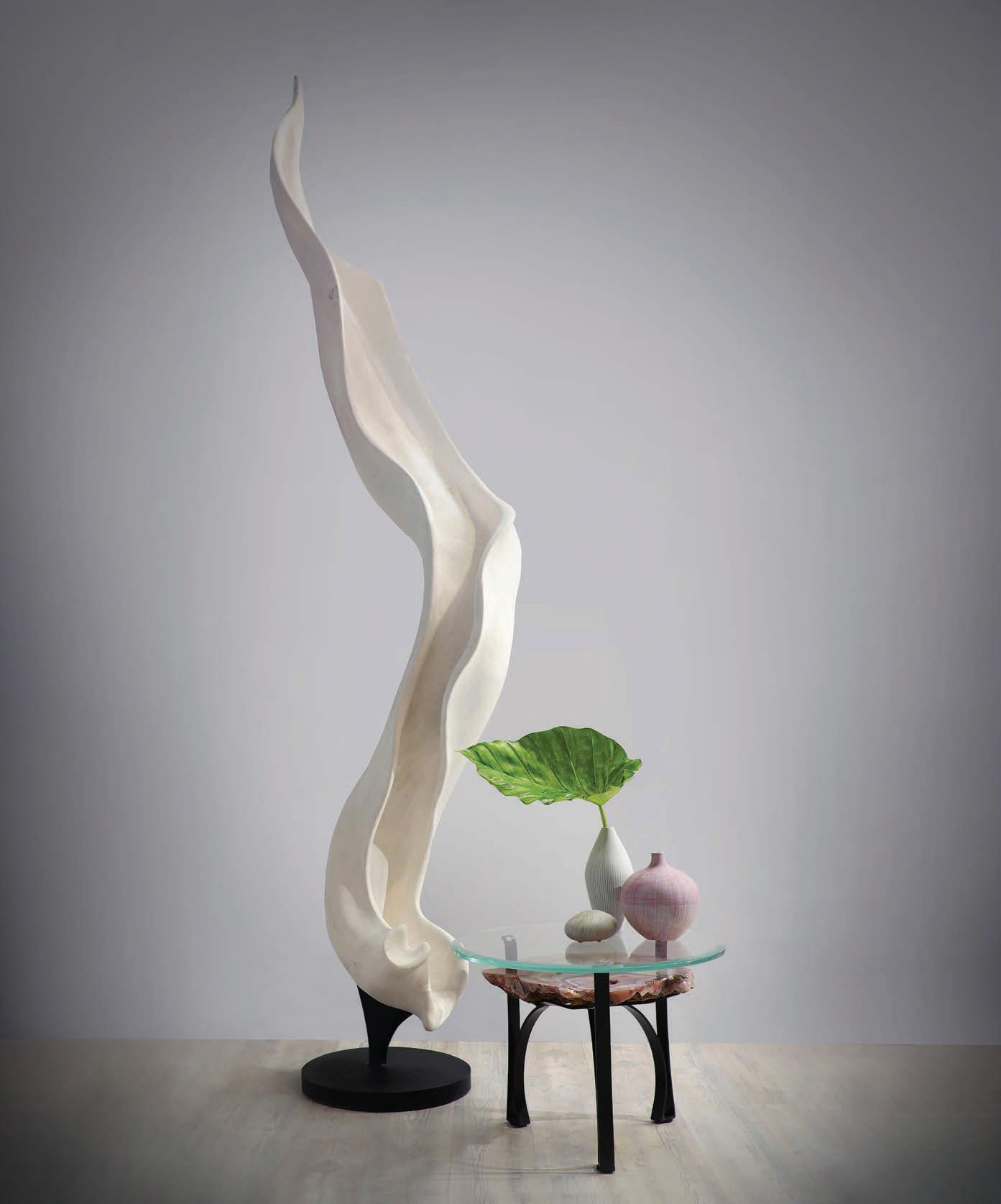
No event during Miami Art Week is complete without a drink in hand, so why not at tend Hive, a celebra tion of cocktail and culinary arts? While the pop-up lounge focuses on presentations about handcrafted libations (such as pavilions dedicated to Champagne and select concoctions) and global cuisine (with highlights from Miami’s best restau rants), it’ll also coincide with a lineup of activations and special performances. The alfresco space boasts an open format that turns into immersive experiences at night with live DJ sets. Stop by December 1-4. (hivewynwood.com)
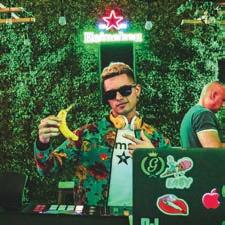




 BY LOLA THÉLIN
BY LOLA THÉLIN
This annual art fair offers an international gathering of literary and visual artists who showcase their cultural perspectives on African heritage. This year’s theme, “The Beautyful Ones Are Not Yet Born,” embraces the possibility of rebirth amid the cruelty of the current world order. AfriKin Art hopes to inspire conversations through panel discussions, lectures, live performances, and art that focus on people’s similarities and creating a sense of kinship. The 2022 art fair is slated for December 1-4 and will be open from noon to 9 p.m. (art.afrikin.org)
No Vacan cy 2021; scenes from previous Hive events.
Only in its third year, this juried art com petition has already amassed a large follow ing. No Vacancy turns public spaces—famed hotels and their lobbies and gardens—into tem porary galleries, with each hotel hosting one of the 12 participating artists or collectives. Ex pect interactive and progressive works that provoke social discourse and selfreflection. On display from November 17 to December 8, No Vacancy is a col laboration between the City of Miami Beach and the Miami Beach Visitor and Convention Authority. A panel of art experts awards the $25,000 prize, and the public determines the $10,000 win ner (you can vote on social media dur ing the expo), which will be announced December 8. (mbartsandculture.org/ no-vacancy-2022)

The South Florida art world embraces augmented and virtual reality with decentralized digital exhibitions, site-specific installations, and more
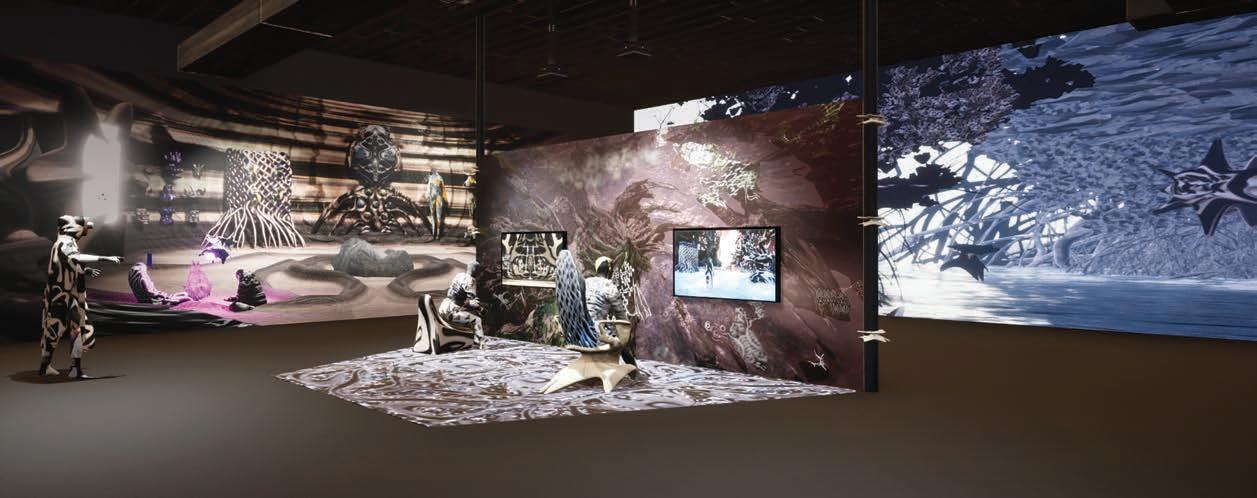 BY CHRISTIE GALEANO-DEMOTT
BY CHRISTIE GALEANO-DEMOTT
Experiencing a fantastical, surreal world doesn’t have to be the stuff of late-night dreams. In fact, artists have been championing digital art in its various forms for years. Virtual reality (VR) and augmented reality (AR) are two of those disciplines; the former envelops your visual field and lands you in a completely virtual world, while the latter takes a layered approach by leveling up your current reality with digital elements, usually through a cell phone or tablet.
Realities, an AR gallery that will enable the museum to support completely digital exhibitions.

This is not the first time PAMM has dabbled in AR/VR. In “Felice Grodin: Invasive Species,” on display from late 2017 to mid-2019, museumgoers used smart devices to spot site-specific digital works. In the ongoing “Marco Brambilla: Heaven’s Gate” exhibition, viewers experience a landscape of looping film scenes through an Oculus VR headset. For these projects, PAMM invited
As technology advances, so too can an artist’s approach to its integration. It’s now happening at such a rapid pace that the Pérez Art Museum Miami (PAMM) has created a digital engagement division. Through the museum’s AR/VR initiatives, Jay Mollica, the division’s director, hopes to illustrate that “the museum is more boundless than [people] realize.”
Mollica’s first projects have included digitizing the museum’s collection and providing artwork descriptions for the visually impaired via a screen reader. Next, PAMM is launching New
patrons into the museum, but what if an installation was decen tralized and not tied to a location?
New Realities will highlight the work of one artist at a time, with the museum’s logo as the stage for interaction. The single-serving approach and keyhole into an artist’s broader practice in mixed reality will appear whenever the logo is scanned. This means that wherever the logo exists—whether that be on a napkin or a shop ping bag—so does the exhibition. The platform will enable the mu seum to commission pieces specifically for the AR gallery.
As Mollica notes, the idea of AR goes back for decades. Sony’s 1979 debut of the Walkman was the first time you could walk around and listen to mu sic untethered. In doing so, the music completely changed your environment. That’s what AR is—a way to enhance your day-to-day life. As PAMM contin ues its exploration into AR, Mollica says the strategy around creating digital-only exhibitions will bring more programming, like artist talks, into the museum as well.





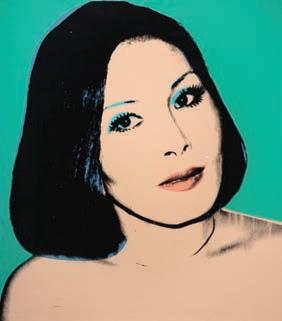









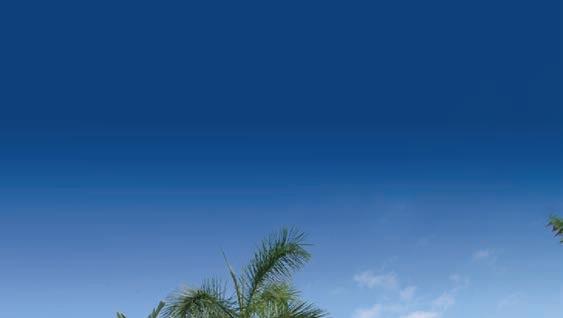
“Digital is not just a single medium but a broad variety of me diums,” Mollica explains. “There are a number of artists working in vastly different ways in digital, but AR is an important one. So, acquainting our people with the broad possibilities of this medi um is something that, as a modern contemporary art museum, [we] can’t ignore what’s going on in the digital space.”

One of those local artists deep in the digital space is Leo Casta ñeda. Growing up in Colombia among a family of artists, Castañe da pursued drawing and painting. He also loved video games, and the artistic elements of those digital worlds augmented his 2D art passions. Now he works as a multimedia artist, merging game design, AR, VR, painting, and interactive sculpture.

“AR is the intersection of the dream worlds of VR and the real world,” Castañeda says. “In a way, it can show a deeper understanding of the real world.”

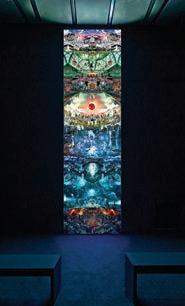
A recent Locust Projects installation showcased Castañeda’s transmedia video game Herramientas (Levels & Bosses), which started as a collection of paintings nearly a decade ago. The exhibit also served as the launch of Otro Inventario, Castañeda’s fine art video game studio that he co-founded with Lauren Monzon. Within this installation, the game’s neo-primordial world, where technology, beings, and landscapes are interconnected, took form across a variety of mediums, every piece an integral part of the same universe that Castañeda’s audience could explore for themselves. .
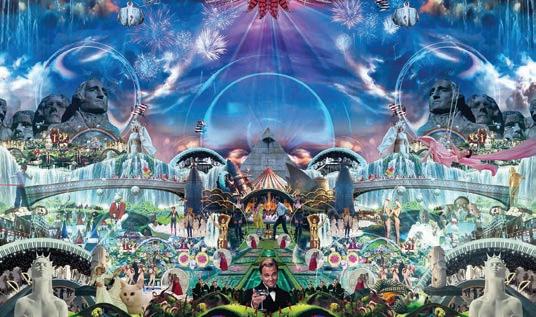
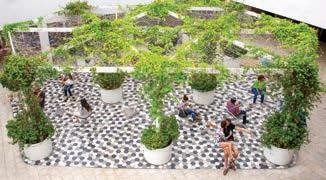
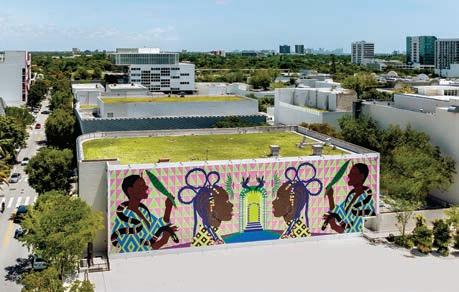
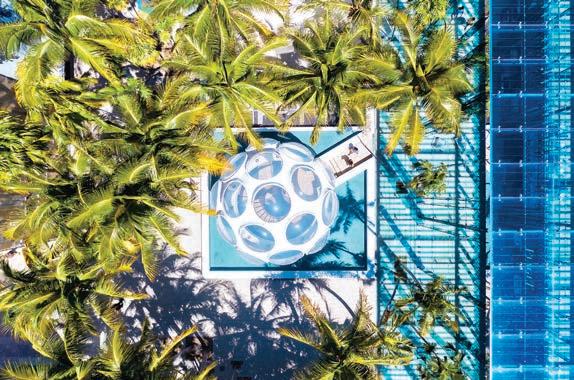 BY CHRISTIANA LILLY
BY CHRISTIANA LILLY
Memories of the late Louis Vuitton ar tistic director Virgil Abloh are sprinkled throughout the plazas, including this sculpture of a Sunoco gas pump with prices we can only dream about today. To find this Abloh-designed relic, cross through Daniel Toole’s Jade Alley, where concrete walls and facades create tugs between shadow and light.
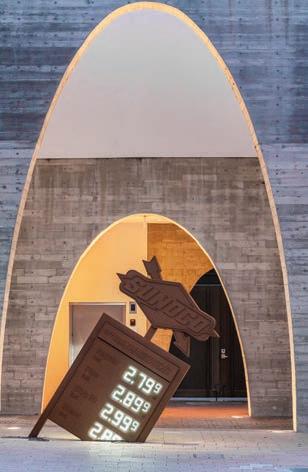

This is perhaps one of the most iconic pieces associated with the Miami Design District. Developer Craig Robins acquired the “autonomous dwelling machine,” as the late architect called it, in 2011, making it one of the first sculptures to call the district home.
Five artists amped up this garage at N.E. 41st Street. And instead of working together, the goal was to have each of their facades stand out independently—making it all the more fun for visitors to explore.
At Jungle Plaza, this larger-than-life mural by Brazilian artist Criola show cases Black beauty and elements of the Afro-Brazilian Can domblé religion.
Part of a series of playground-inspired installations designed for the annual MDD commission, this swing set by Chilean design firm gt2p was so well received that it’s become a permanent fixture in the neighborhood.
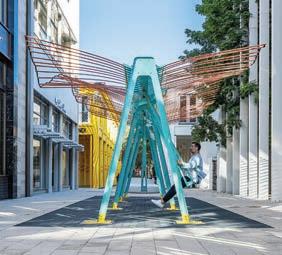
Take a seat: This collection of 24 hanging chairs invites passersby to sit and rock their worries away. Together, the web creates a six-point star.

Interested in relocating to Palm Beach County? Learn about the different options for you and your employees making the move. Whether you’re interested in an urban lifestyle, an outdoor lifestyle, golf, boating, beaches or cultural, we’re here to educate you on your options and help make the transition smooth.


It’s about finding a home. It’s also about finding the right community.


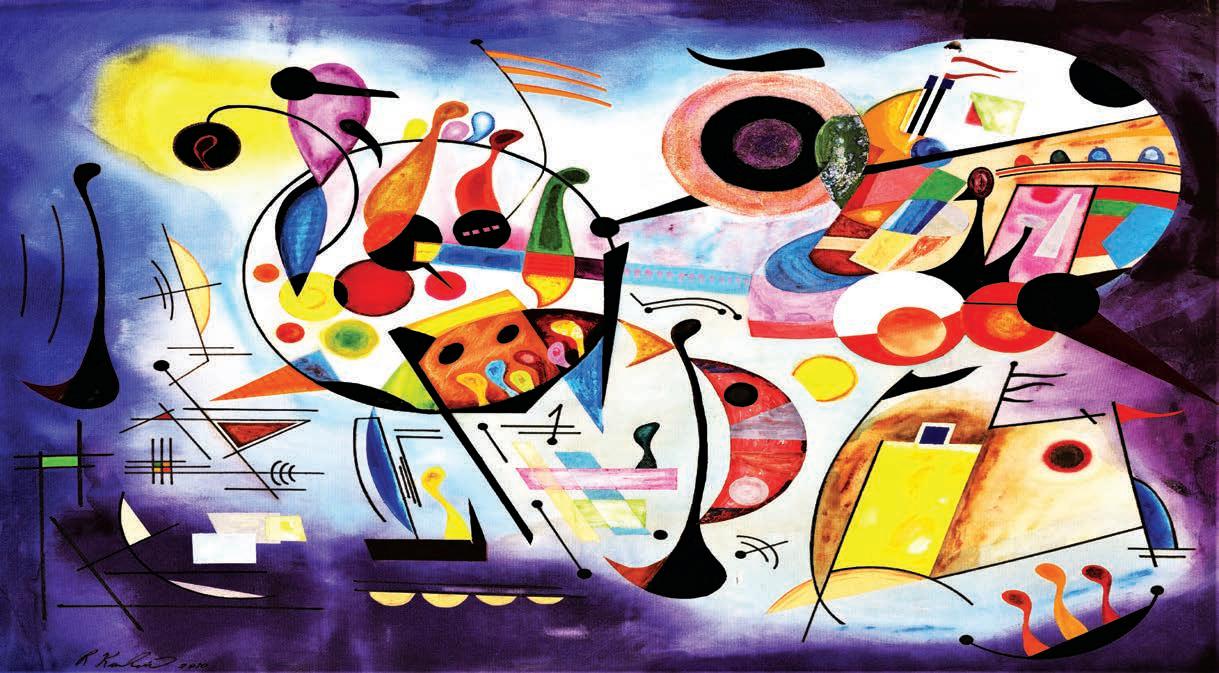


When: November 30 to December 4 (previews November 29)





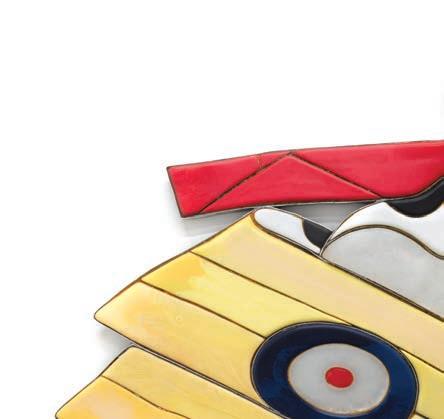


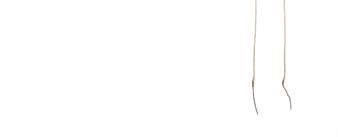



Where: 1 Herald Plaza at N.E. 14th Street and Biscayne Bay
BY MARY MURRAY COURTESY OF ART MIAMI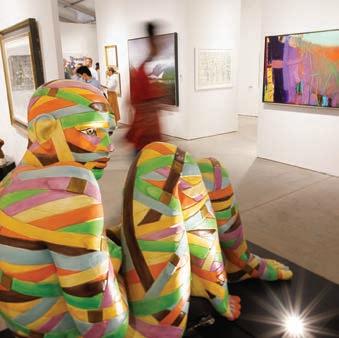

When: December 1-3 (previews November 29-30)


Where: Miami Beach Convention Center

What: Celebrating its twentieth year, Art Basel Miami Beach 2022 will include 283 of the world’s leading galleries, making it the largest ABMB to date. Highlights include the Positions sector, which will boast 19 solo presentations from the likes of Tonia Nneji, Leslie Martinez, and Ishi Glinsky. (artbasel.com/miami-beach)
What: For six days, Art Miami will showcase works from the twentieth and twentyfirst centuries, culled from more than 155 galleries. To discover emerging, mid-career, and cutting-edge artists, mosey over to the event’s sister fair, Context Art Miami. (artmiami.com, contextartmiami.com)



1.
When: November 30 to December 4 (previews November 29)
Where: Ocean Drive at 8th Street
What: Committed to providing a plat form for experiential innovation and discovery, Scope showcases interna tional emerging artists. Its exhibitors will feature “The New Contemporary,” which Scope describes as “a genre that stands as a critical contribution to both global politics and local community en gagement.” (scope-art.com)
This page, clockwise from above: Red Dot Miami; David Castillo; Storyteller (2021), Barbora Žilinskaitė, at Design Miami/; Whatever Brings the Light (2022), Tonia Nneji, at Art Basel Miami Beach. Opposite page, clockwise from top left: Geronimo (2021) and Spitfire (2017), Ishi Glinsky, at Art Basel Miami Beach; Art Miami; Sleepwalkers (Linear Version) (2007), Doug Ait ken, part of “New Media” at the Margulies Collection at the Warehouse.

When: November 30 to December 4 (previews Novem ber 29-30)
Where: Pride Park What: Decor and design lovers flock to this fair for its curated global collection of twentieth- and twenty-first-century furniture, lighting, and objets d’art. Themed around “The Golden Age: Look ing to the Future,” Design Miami/ 2022 will welcome 50 galleries and exhibitors in its main booths and Curio program. (shop.designmiami.com)
When: December 1-4 (previews November 30)
Where: Mana Wynwood
2.
3.
When: November 29 to December 3 (previews November 28) Where: Miami Beach at Ocean Drive and 12th Street
What: Since debuting in 2012, this independently owned fair has prioritized inclusivity, col laboration, and supporting the greater Miami art ecosystem and the global art community. For 2022, Untitled Art is back at the beach with more than 140 international galleries, as well as site-specific installations and performances. Collect re cently caught up with the fair’s founder, Jeff Lawson, to learn more. (untitledartfairs.com)
Collect: What’s an example of a step Untitled Art has taken toward creating an inclusive environment for those presenting at the fair?
Lawson: Since the beginning, we have focused on nonprofit spaces, as well as other spaces that are not traditional gallery spaces. Last year we created the Nest program, which focuses on emerging young spaces that can be nonprofit or traditional for-profit, but we’ve reduced the cost of participation by half. It’s been a huge discount to be able to support these younger spaces.
How has Untitled Art embraced
technology in recent years?
During the pandemic, we had the first virtual reality fair, I believe, anywhere. We hosted a completely virtual reality fair in the summer of 2020 [and] we re-created the space in Miami Beach. We have since had virtual private rooms. We have worked with different technology partners throughout the years to provide different opportunities. This year, we are working with Vortex and our Nest programs so that all the Nest galleries, in addition to showing their work at the fair, in real life, they will also be presented on a digital platform, in a virtual reality setting.
Are there any themes that will be especially prevalent at this year’s Untitled Art fair?
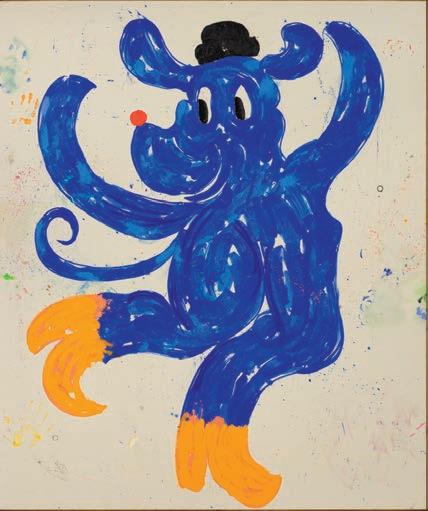

This is our largest, most inter national fair we’ve had [and] our focus is to try to put to gether the widest range. [Ar tistic director] Omar LópezChahoud is focusing on certain aspects of Miami, in terms of programming and special proj ects. But in terms of general theme, the idea really is, how do we try to shine a light on as many corners and aspects of the market as possible?
What: Offering “two fairs under one roof,” Spectrum and Red Dot will cover more than 150,000 square feet of indoor exhibi tion space. Together, the fairs spotlight lauded artists and galleries from across the country and around the world. Within Spectrum, head to the [Solo] sector, in par ticular, to discover your next favorite art ist. (redwoodartgroup.com)
When: December 1-4 (previews November 29-30)
Where: The Hangar in Coconut Grove What: Now in its sixteenth year and de buting in a fresh location, Pinta will bring new energy to its mission to share Ibero American modern and contemporary art. Its in-person fair will be enhanced by Me dia Point, a digital section with live expert talks, insight into the works on display, and virtual tours. (miami.pinta.art)
Stop by MOCA to view “Didier William: Nou Kite Tout Sa Dèyè,” the largest retrospective to date of the Haitian-born, Miami-raised artist’s work; “Leah Gordon: Kanaval,” featuring Gordon’s black-andwhite photographs and a feature-length documentary on Haitian carnival; and “To What Lengths,” wherein VantaBlack will adorn five palm trees in the MOCA Plaza with braids, beads, metal, and artificial flowers as an homage to the women in the artist’s life and the meaning behind the oral histories and traditions they share. (mocanomi.org)
There’s always something new to see at The Bass. In addition to “Phraseology,” a show that explores the use of language in modern and contemporary art, The Bass recently opened two solo exhibitions: “Jamilah Sa bur: The Harvesters” and “Adrian Villar Ro jas: The End of Imagination.” (thebass.org)
This page, clockwise from above: The Swimming Pool (2004), Leandro Erlich, at the Pérez Art Museum Miami; installation view of “Phraseology” at The Bass; Just Us Three (2021), Didier William, at the Museum of Contemporary Art, North Miami. Opposite page, from top: Dancing Blues (2022), Szabolcs Bozó, at Untitled Art; Lotus (2022), Chris Akordalitis, at Untitled Art.

Debuting just in time for Miami Art Week on November 29, “Leandro Erlich: Liminal” introduces museumgoers to a different type of augmented reality. Across PAMM’s special exhibition galleries, a series of everyday spaces comprise visual illusions that will transport you to physical planes other than our own. (pamm.org)
ICA Miami will unveil a trio of new exhibi tions on November 28: “Hervé Télémaque: 1959-1964,” which focuses on the Haitianborn artist’s first five years of production; “Michel Majerus: Progressive Aesthetics,” the first U.S. museum survey of the late artist’s work from the 1990s; and “Nina Chanel Abney: Big Butch Energy,” which will include a new installation by this mil
lennial creative who has taken the contem porary art world by storm. (icamiami.org)
One of the city’s most prominent alterna tive art spaces, Locust Projects will open three new shows for Art Week, including “T. Eliott Mansa: Room for the Living/Room for the Dead” and the video exhibition “Portals of Introspection.”
The third, “Ronny Quevedo: Ule Ole Allez,” is a celebration of Futsal-playing communi ties, with the artist inviting teams to play on a site covered by canvas and paper, then marking their movements to create a col laborative work of art. (locustprojects.org)
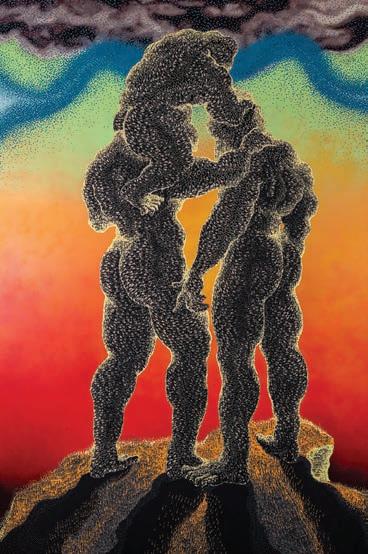
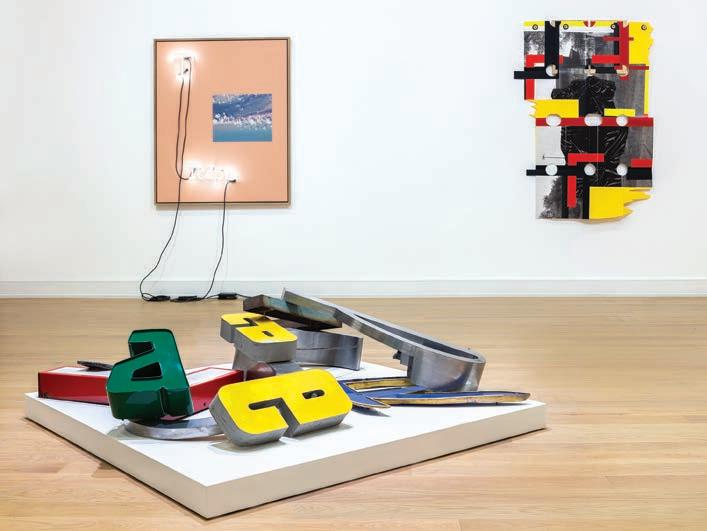
Beginning November 28, the Rubell Museum Miami will host four artist presentations, including works by artist-inresidence Alexandre Diop, commissioned pieces by Doran Langberg, and paintings by Jo Messer and Tesfaye Urgessa. (rubellmuseum.org)
Now through April 29, the Margulies Collection is hosting “The Italians,” “The Bitter Years Photography Dorothea Lange and Walker Evans,” “New European and American Painters and Sculptors,” and “New Media.” (margulieswarehouse.com)
New art activations dot the Miami Design District, such as “Boil Toil + Trouble,” a traveling exhibition of works inspired by water and its magic, on view at 50 N.E. 40th Street from November 29 to December 14. Another must-see will be “Rock | Roll,” an installation by Miami-based architect Germane Barnes that was the official selection of the 2022 Miami Design District Annual Neighborhood Commission. Discover Barnes’ colorful and shaggy seating capsules, free-floating domes, and vibrant wind chimes throughout the district’s public spaces. (miamidesign district.net) .
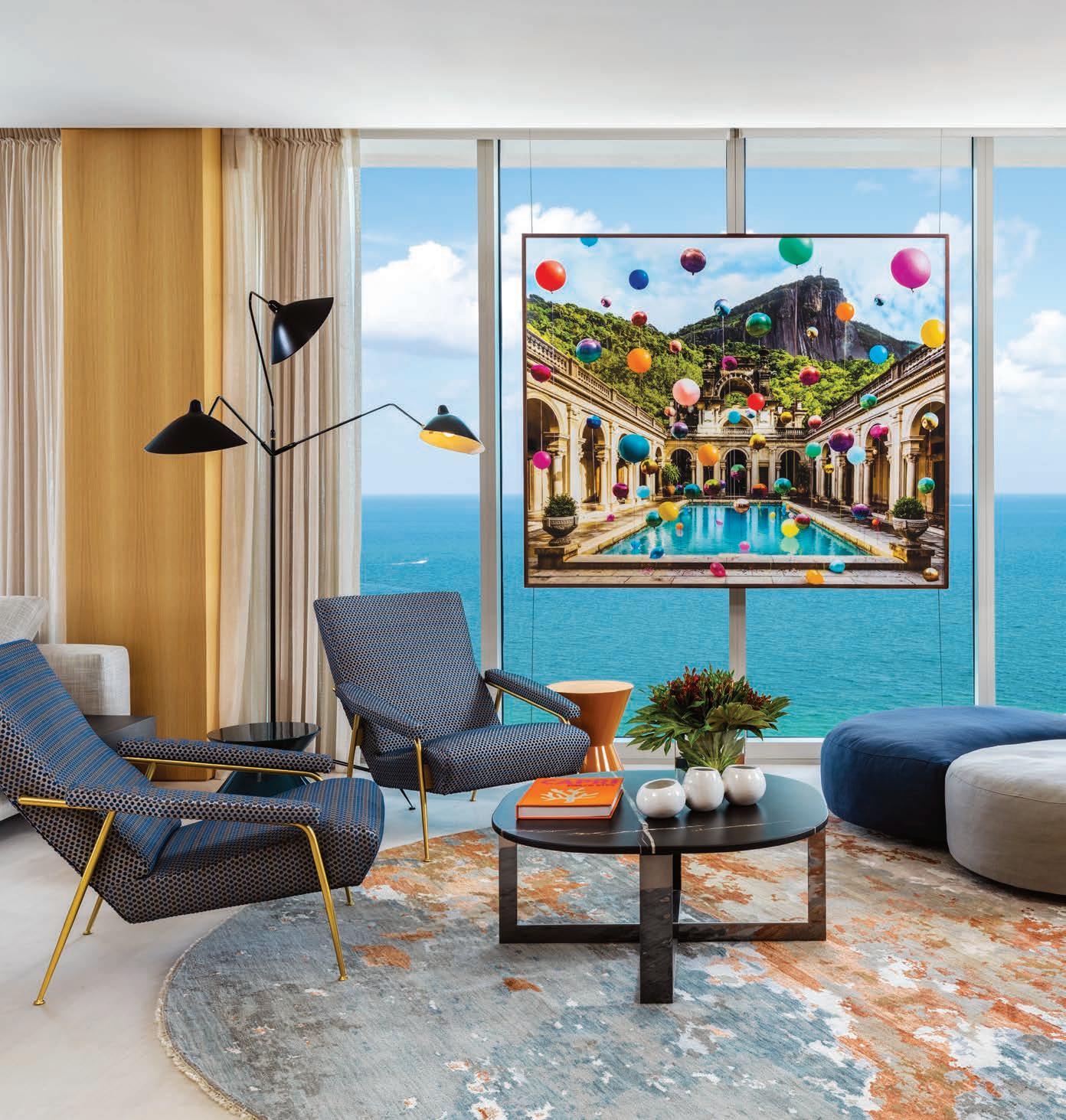
High on the thirty-eighth floor of the Jade Signature tower, this Sunny Isles Beach residence boasts views of both the Miami skyline and the Atlantic Ocean. Heverton Silva and Eleonora Hildebrand of HS Arquitectura emphasized the building’s relationship with nature and its surrounds within the interior design. They knew that the stunning turquoise waters would be the perfect backdrop for a photograph by Flávia Junqueira, a Brazilian artist whose images bring a fantastical feel to real-world environs. The positioning of this photo does the same, acting as a playful focal point for the welcome sitting area that also includes a seascape-inspired rug by Oriental Rug Company, an ottoman grouping by Living Divani, and Gio Ponti side chairs from Molteni&C. (hsarq.com)
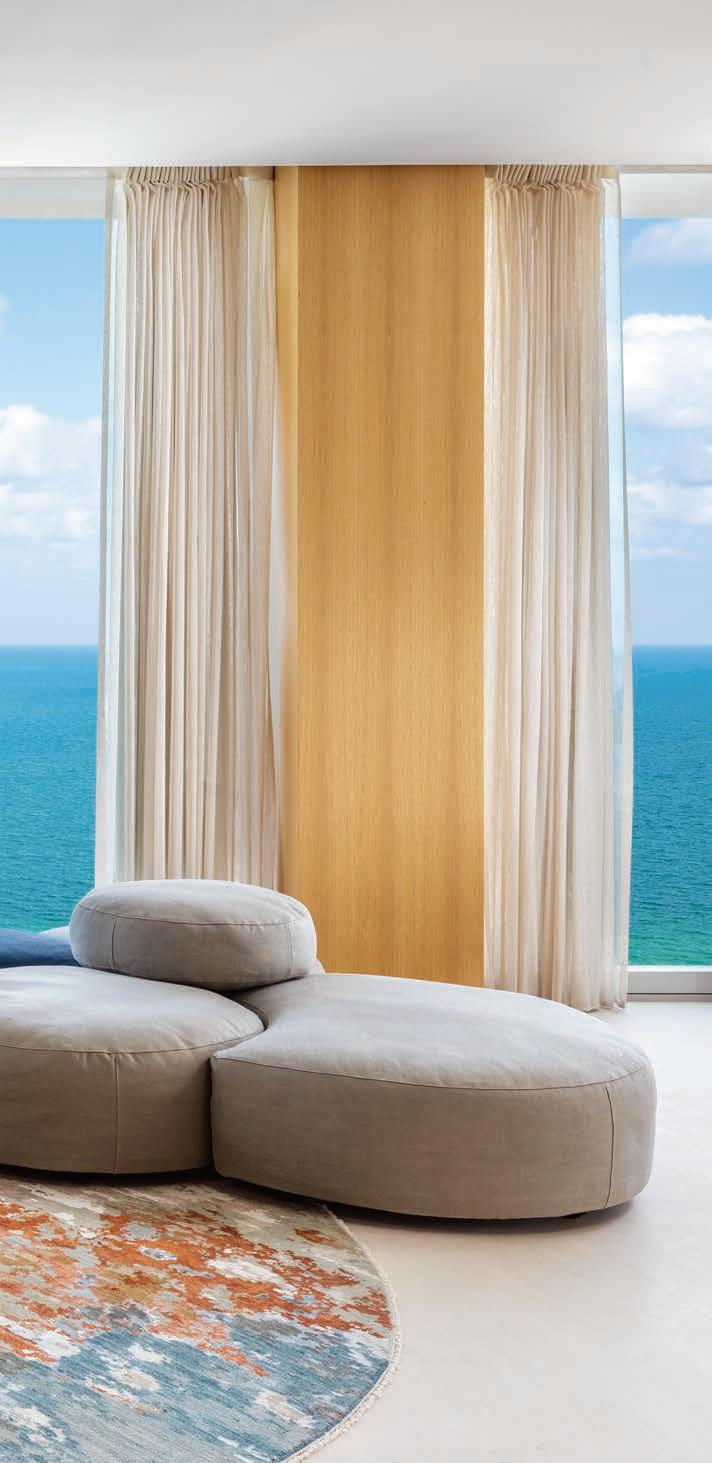

Art was a huge determinant in the design of this Surfside condominium, notes Carola Hinojosa of Hinojosa Design Studio, who led the project along with Sabrina Maclean. Hinojosa worked with this client to select 13 pieces to complement the home’s muted earth tones and textured furnishings. Across from the kitchen bar, Doug Aitken’s backlit Holly wood Industrial Complex glows against blackened steel panels. It is mounted above a floating shelf, which holds two water bag sculptures by Dylan Martinez. In the background, the colors and movement in Aitken’s work are echoed in Point by Terry Winters. (hinojosadesign.com)
Fun odes to Pop Art and pop culture iconography appear across this Key Biscayne condominium, designed by Deborah Wecselman of Wecselman Design. The breakfast area features resin sculptures by artist Tim West, who took inspiration from Andy Warhol’s Campbell’s Soup Cans, transforming the iconic cans into exploding graffiti paint canisters. Wecselman mounted them on the wall and finished the space in a distinctly 1970s aesthetic à la Brueton. A custom metal and marble table by Wecselman Design gives way to a light fixture by Atelier de Troupe and bold blue Gubi chairs. (wecselmandesign.com)

TROY CAMPBELL, MIAMI
For this Naples abode, Judith Liegeois of Judith Liegeois Designs sought to create a zen escape that included a calm, neutral setting for the homeowners’ growing art collection. In a second-floor alcove, Liegeois invited the outdoors in. She started by sourcing a wall instal lation of birds in flight, which artist Ran Adler fashioned out of acacia thorns. She completed the scene with a tree sculpture by Ed Koehler and an abstract paint ing in complementary hues by Leland Brink man. All three art ists—Adler, Koehler, and Brinkman—live and work along the Gulf Coast and cull inspira tion from the natural world. (judithliegeois designs.com)
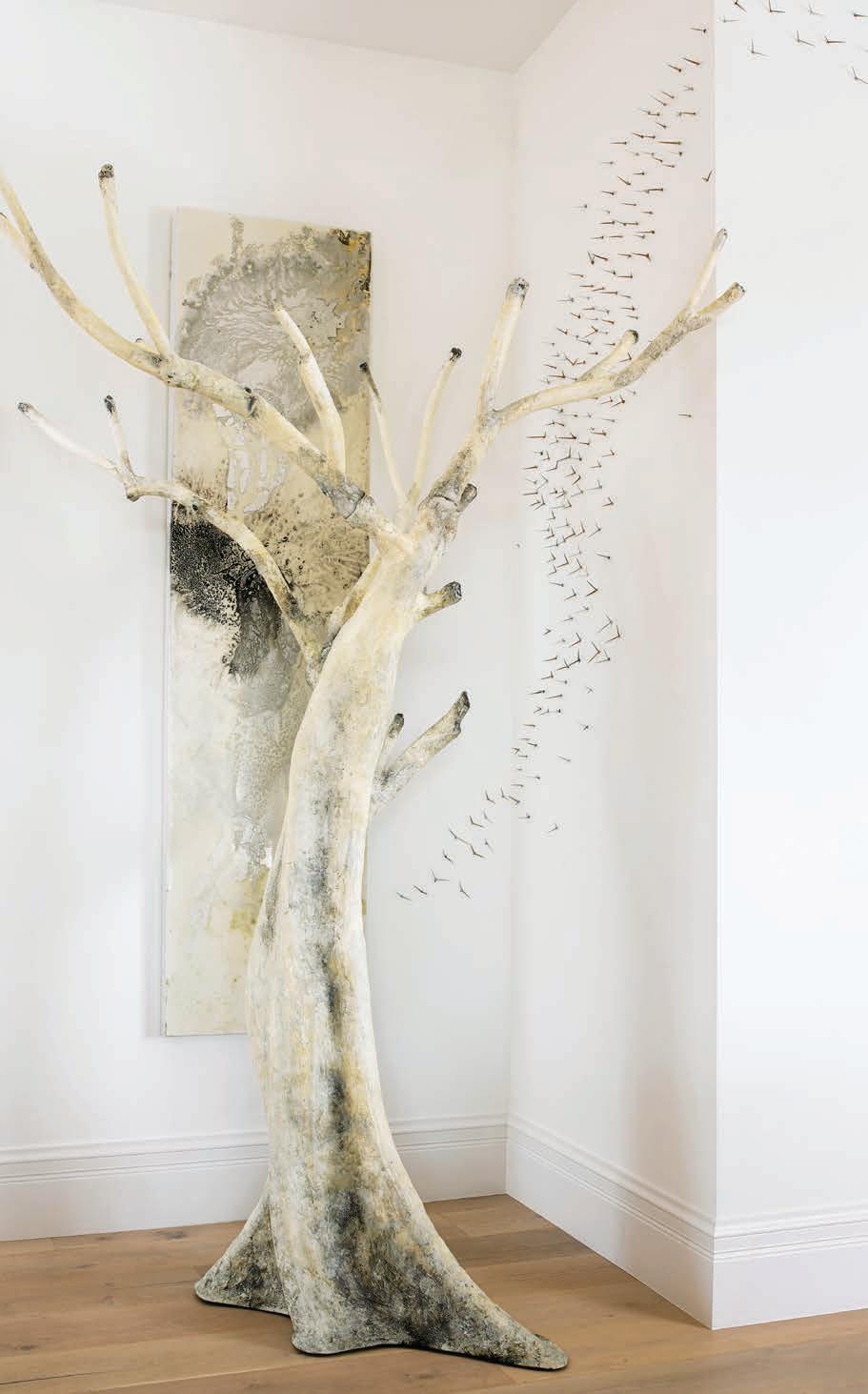
This Venetian Islands home subtly showcases the passions of its owners. With the goal of creating vignettes in which each piece in the couple’s art collection could stand out, Charlotte Dunagan and Thomas Diverio of Dunagan Diverio Design Group opted for clean lines and natural-hued interiors. Outside of the degustation room, a pair of warrior statues by Japanese artist Takeshi Haguri stand guard. Embedded with a series of 12 photos entitled Day by Day Good Day by Peter Dreher, a concealed panel door leads to the wine-tasting area, where Harvest Moon by Matthew Day Jackson warms the space and beckons visitors to enter and imbibe. (dunagandiverio.com) .
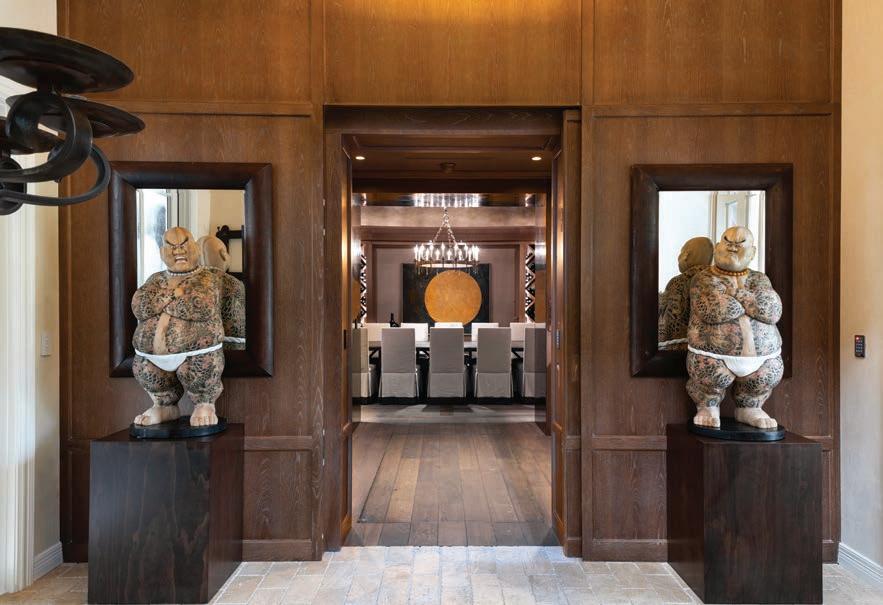

INSET: ASSEMBLY (2022), RASHAAD NEWSOME

BELOW: APEX (2020), KEVIN HEES



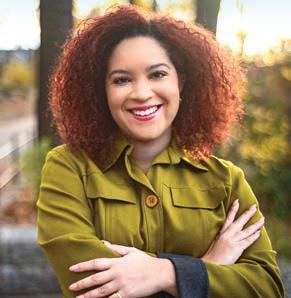

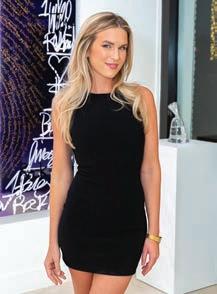


THREE SOUTH FLORIDA GALLERISTS AND CURATORS OFFER INSIGHT INTO THE ARTISTS, MEDIUMS, AND TOPICS LEADING THE WAY IN THE CONTEMPORARY ART WORLD
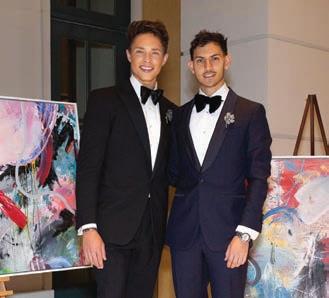

 BY LOLA THÉLIN
BY LOLA THÉLIN
Contemporary art seems to always be having a moment. The best examples of contemporary art—which is simply defined as “the art of today”—have the uncanny ability to thrive in a global, multifaceted environment and connect with viewers across a variety of platforms. Collect recently spoke with Adeze Wilford, curator at the Museum of Contemporary Art, North Miami (MOCA); Devon McCready, gallery director of Samuel Owen Gallery on Palm Beach; and Nick Hissom, co-owner of Aktion Art on Palm Beach, to better understand the current nuances of the all-encompassing art genre.
Collect: What excites you about con temporary art?

Wilford: Contemporary art drew me in early in my career because of the oppor tunity to engage with living artists. You get to know them, spend time in their studio, and hear firsthand why a gesture is impor tant or how they source specific materials.
McCready: The contemporary art world is one of the most exciting and unpredict able industries in the world. I love explor ing the vast variety of mediums available to artists and how they are constantly pushing those limits.
Hissom: It is a fast-moving, fast-traveling international art community that has
its finger directly on the pulse, helping to introduce and create culture and art throughout the world.
Are there any specific forms of expression coming through in contemporary art?
Hissom: There is certainly this idea of
contemporary surrealism and flatness, particularly when applied to colorful land scapes, that is coming back. Surrealism is one of the most interesting forms of ex pression through art, and to reimagine it in a contemporary way is both incredibly challenging and stimulating. In the modern day we are exposed to so much fantasy through special effects and technology; it makes it hard to paint something as captivating by comparison, so it’s a real triumph when done right.
Is there a dominant aesthetic in con temporary art?
Hissom: I would say either abstract expressionism or modern surrealism. Abstract expression in one form or the other has been highly dominant since its emergence in the 1940s and ’50s, and the Pop Art movement has, of course, capti vated much of contemporary figuratism and portraiture. But now, art is very openended in terms of stylistically what it can be. There is definitely a revisitation of
surrealism starting to emerge over the past three to five years, but I would still say abstract is more widely dominant for now.
Who are your favorite female artists paint ing contemporary surrealism?

McCready: Audra Weaser creates dreamlike, watery, abstract paintings with a unique process. She builds up different washes on color on a wood panel, then sands away at the surface to reveal pieces of the layers under neath. Her compositions are inspired by [the] photos she has taken in nature.
Hissom: Hilary Pecis is definitely one of my favorites, as well as Shara Hughes.
Large auction houses have shown a grow ing interest in pop culture and crossbranded collectibles. How does this affect an artist’s appeal?
McCready: A great example of this cross-branding is the collaboration be tween surfer/artist Tim Bessell and The Warhol Foundation. This series features surfboards with iconic Warhol images that can be installed as wall art but also come with fins and can function as real surfboards. After learning that Warhol’s Shot Sage Blue Marilyn sold for $195 million at Sotheby’s this spring, I noticed an increased interest in the Bessell x Warhol collaboration. Cross-branded
collectibles and collaborations like this one can give collectors on every level the ability to participate in these his toric, record-breaking sales.
Any collaborations that are catching your eye?
Wilford: I’ve been following what Nina Chanel Abney has been doing in this space; she released some innovative col lectible items that seamlessly fit in with her larger practice. Her most recent collaboration with the Jordan Brand for a capsule collection of sneakers and cloth ing was really exciting. I also love that the branding featured the founders of BLK MKT Vintage, an incredible store that specializes in vintage housewares and books [that] look at Black American cul ture in an accessible and fresh way.
How does technology and science ad vance contemporary art?
Wilford: I’m really interested in the ways visual art and performance can build new methodologies within a rapidly changing tech landscape. Artists are such visionar ies and can bring new ideas to these con versations about building the tech that will shape our future. Rashaad Newsome has been doing impressive things with merg
ing his practice that explores Black visual culture across the diaspora, the LGBTQIA community, and cutting-edge technology. He’s been working with AI on this ongoing project called Being, and it blends video

Above: Being (2022), Rashaad Newsome
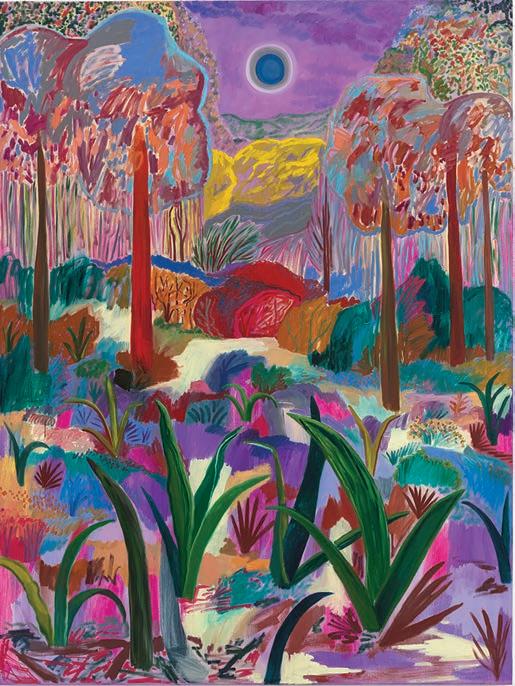
Left: My Violet Lullaby (2021), Shara Hughes
Opposite page: Yellow Table (2021), Hilary Pecis
and performance with explorations of mental health within the Black community in the wake of George Floyd.
Who is melding technology with art in unique ways?
McCready: I am fasci nated by the artwork of British photographer Nick Veasey. Using a large format X-ray ma chine, Veasey creates X-ray photographs of everyday objects and vehicles. The image is comprised of hundreds of smaller X-rays. Veasey is limited by the film size of 14 inch by 17 inch. To capture any object larger than this size, he must dismantle the subject and X-ray each ele ment individually.
Hissom: I love the work of ThankYouX [Ryan Wilson]. Not only do his swirling colors and brushstrokes deeply captivate the viewer, but his incorporation of digital screens displaying unique NFTs into his work takes the canvases to another level. Credited as the inventor of “phigital” [physical and digital] art, his work includes musical collaborations with Hans Zim mer, video-game-level world building, and museum-quality painterly technique.
How have artists’ choice of materials changed recently? Is the industry going more green?

Wilford: I do see artists being engaged with ecologically sustainable practices, including material choices. I’ve also noticed institutions making decisions like shipping via boat rather than air … and measures like that really can make a difference. MOCA was designed to be a completely flexible space, so we do a lot
of wall building for our exhibitions. I’m committed to exploring new ways to do this [that allow] for reusing of materials.
What social themes do you see inter preted through art?

Hissom: I think the primary theme that I have seen commented on in some form or another most dominantly over the past few years has been the pandemic. As it has affected us all, it has also affected every artist—the isolation, reflection, and change in society. Some artists have struggled, some have excelled creatively, many have drawn inspiration from the emotions they experienced, and others have directly de picted viruses or health in their artistry.
Which artists’ social messages have resonated with you?
Hissom: Kevin Hees’ series AKT: Accep tance, Kindness, and Tolerance became a main theme of inspiration and light for me during [the pandemic]. His motifs of universal positivity and spiritual freedom resonated with me on a personal level and made me feel less closed in at home.
Wilford: I’ve really admired Nicole Fleet wood’s exploration of the criminal justice and carceral system with her exhibition and long-term research project Marking Time. Here in Miami, I’ve really responded to Reginald O’Neal’s recent installation 18 Years and Counting at Oolite Arts in the exhibition “Lean To.” It is an immersive space that replicates the square footage of a prison cell and is activated by a portrait of the artist’s father and audio recordings of their familial conversations throughout O’Neal’s father’s ongoing incarceration.
Is the art world paying more attention to BIPOC and LGBTQIA contemporary artists?
Wilford: We are in a place where there are faster means of information and images being shared with the world, and it feels a lot more present in everyday conversation
than in generations past. However, there have always been galleries and collectors who have engaged with and collected art ists who have existed outside of the mar gins of the dominant discourse. The role of artists throughout time has been to engage with the social and political climate of their time. They respond to oppression, changing cultural norms, and the issues at the forefront of the world’s focus. That has never changed. Prior to the political upris ings in 2020, there was greater attention being paid to BIPOC and LGBTQIA artists, but I think that also has a lot to do with the landscape of cultural producers including artists, curators, and museum directors evolving to begin to represent a fuller pic ture of where we are nationally.

How does MOCA help chart the next big artist?
Wilford: MOCA’s primary role is to pro vide a platform for artists who have been left out of the dominant art historical discourse and to present living artists’ work at pivotal moments in their careers. We work with artists who we feel have [a] timeliness to their practice—artists who
Right: Oracle (2020), Kevin Hees
Below: Lil Roach (2022), Reginald O’Neal
Opposite page, from top: More Life (2022), ThankYouX; Land Rover Surfer (2018), Nick Veasey.
are engaged with so ciopolitical issues and artists who have been under-explored are who make up our program. My curatorial practice is artist-driven, and I find inspiration through being in conversation with artists who have long-term established careers [and] artists who are just finishing MFA programs. I’m hop ing to keep that duality present in my work at MOCA. I think that bal ance of established and emerging is where meaningful explorations can begin.
As of late, have you noticed any trends emerge from your collectors?
McCready: I see a trend toward visually uplifting artwork. From my insight on what collectors want for their residential collec tions, I can see a trend toward art that is energetic, dynamic, and playful. The aes thetic is bright and colorful, with an em phasis on nuanced techniques and materi als. I also have noticed collectors wanting to diversify the artists they collect. They want artists of different backgrounds and who employ innovative techniques.
How do you advise a first-time buyer? McCready: The world of contemporary art collecting is intimidating and opaque to new buyers. By asking questions and understanding the buyer’s goals I can best
assist them in their first acquisition. As a 28-year-old gallery owner and director, I find myself in a unique position working in parallel with collectors to demystify the contemporary art market.
Hissom: We advise our buyers based off their needs—working within their wants and level of interest in art from an aesthetic or per-project basis, advising on art as an investment value asset, or creating from scratch a dynamic and wellrounded collection.
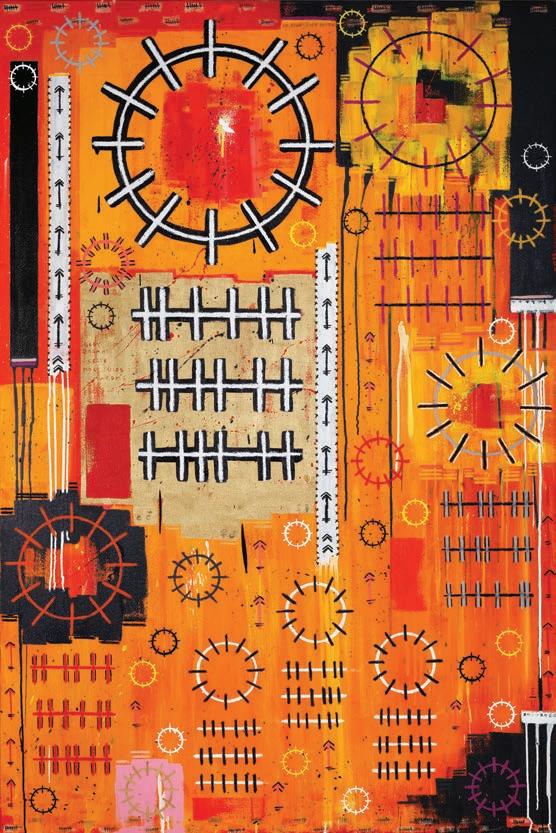
Art Week is a massive event. What are your tips for selecting what to see?
Wilford: It’s easy to get overwhelmed by the sheer amount of options that there are for works on view and projects to spend time with. I think breaking down the shows by neighborhood and really utilizing Google Maps to plan out your day by prox imity helps. .
true to Argentine art collector and real estate developer Alan Fae na’s vision in his native Buenos Aires, creating a cultural neigh borhood along Miami Beach’s historic Collins Avenue has been nothing short of revolutionary. And, with $100,000 on the line for the biennial Faena Prize for the Arts, the buzz at this year’s Miami Art Week is at an all-time high.
“Following the success in Buenos Aires, we are thrilled to bring the Faena Prize
to Miami for the first time,” says Nicole Comotti, executive director of Faena Art, a nonprofit organization commit ted to supporting artistic innovation. “We are ecstatic to announce that Paula de Solminihac is this year’s winner. Her site-responsive work is a topographic installation that takes the form of the beach morning glory plant and explores ideas surrounding humanity’s place on our planet. Using beach sand as its main material, her work invites interaction and
play to create a collaborative setting.”
Faena Art often causes a stir during Miami Art Week. In 2021, the organization commissioned a sitespecific work by Pilar Zeta, an Argentine artist perhaps best known for design ing album covers for musicians including Katy Perry and Cold play. Located on the beach, her immersive Hall of Visions invited viewers to pause and reflect within the present moment.
Furthermore, the Faena Art Project Room houses yearround exhibitions, providing artists with a platform to experi ment. This fall, the Project Room will fea ture a video series by Quayola (presented in partnership with Aorist). Plus, a never-before-seen instal lation by Random International (commis sioned by Aorist in partnership with Faena Art) will be unveiled at Faena Beach, Petroc Sesti’s Heart of Okeanos (presented by The Reef Line in collaboration with Faena Art) will be on view at Faena Cathedral, and Faena Hotel Miami Beach will host Antonia Wright and Ruben Millares’ Patria y Vida, a large-scale light sculpture, in collaboration with No Vacancy Miami Beach. (faenaart. org) —Judy Alexandra DiEdwardo
